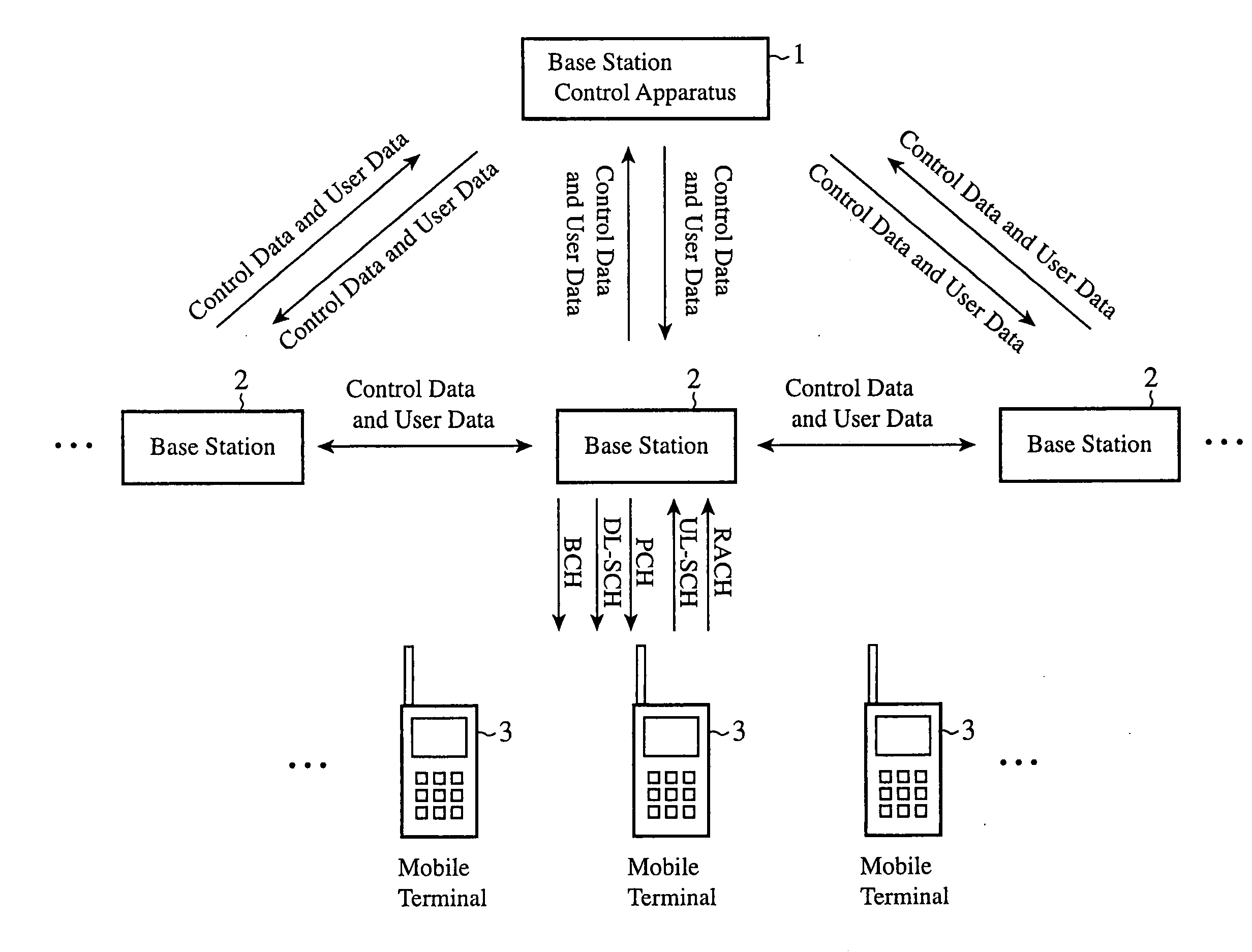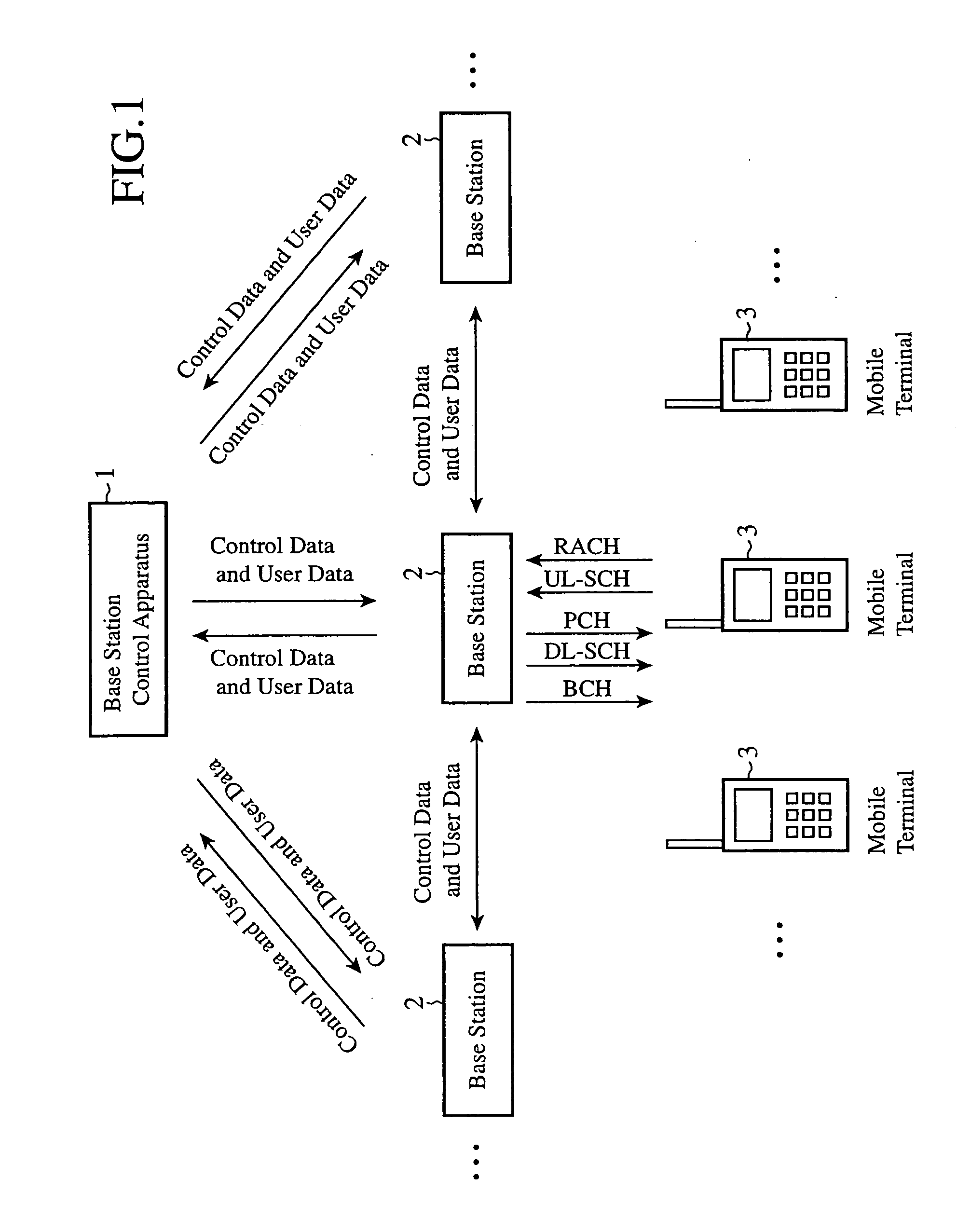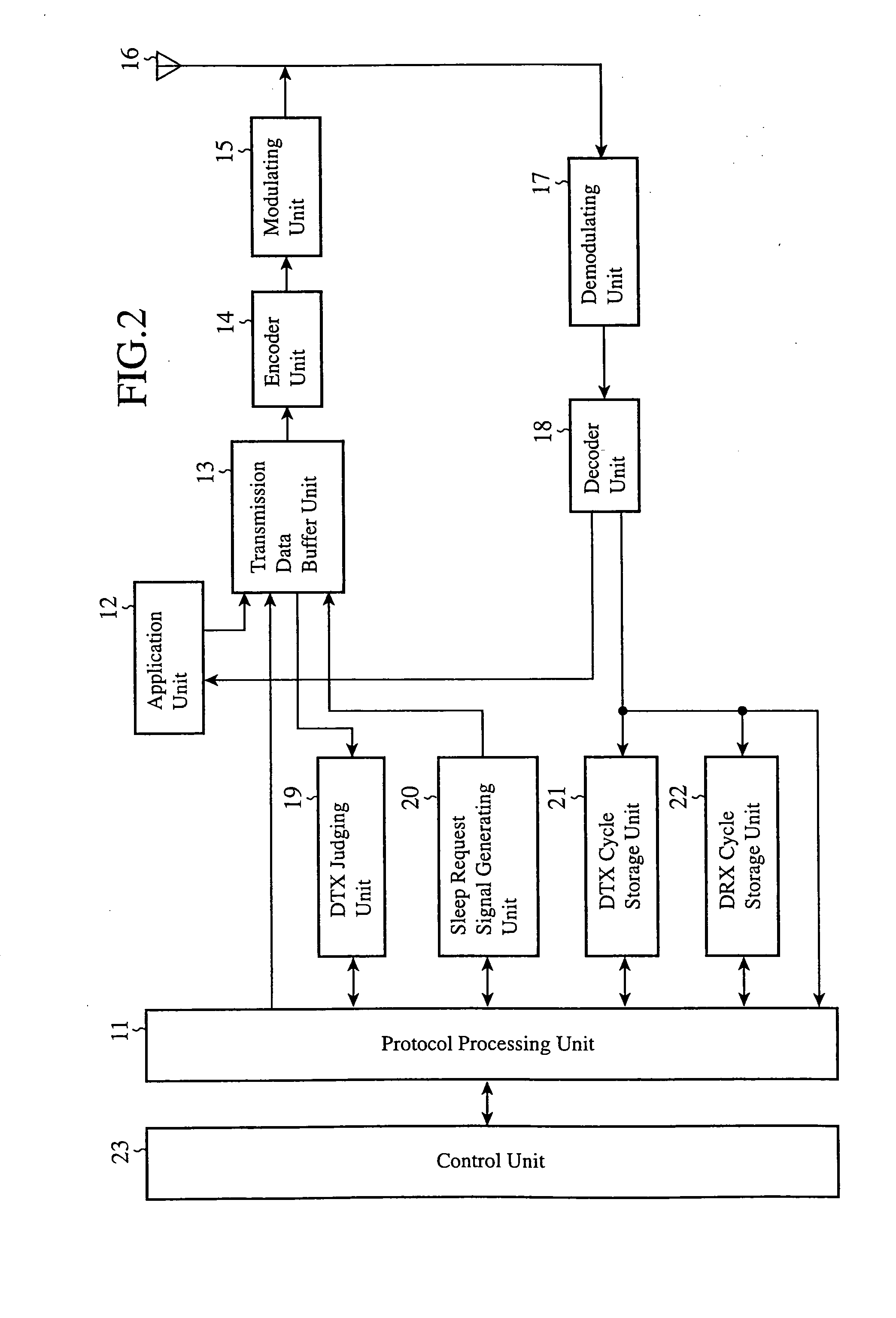Mobile Communication System and Mobile Terminal
a mobile terminal and communication system technology, applied in the field of mobile communication systems, can solve the problems of limiting the available capacity of a mobile terminal in a mobile communications system, unable to make a transition to drx operation, heavy scheduling load, etc., and achieve the effect of efficient power consumption in the mobile terminal
- Summary
- Abstract
- Description
- Claims
- Application Information
AI Technical Summary
Benefits of technology
Problems solved by technology
Method used
Image
Examples
embodiment 1
[0124]FIG. 1 is a block diagram showing a mobile communications system in accordance with Embodiment 1 of the present invention.
[0125]The mobile communications system of FIG. 1 is an LTE system, and an uplink scheduler and a downlink scheduler of a base station controls the transmission rate, the transmission power (the permitted transmission power and the maximum permitted transmission power), the transmission timing, the available frequency, the width of the available frequency, and so on of each of a plurality of mobile terminals.
[0126]Transport channels (Transport Channels) via which a mobile terminal and a base station communicate with each other in the mobile communications system of FIG. 1 will be further explained. Although it can be considered that the names and definitions of the transport channels will be changed from now on because the transport channels have been under debate, it cannot be overemphasized that the present invention can be applied to even a case in which ...
embodiment 2
[0344]FIG. 6 is a sequence diagram showing the description of processing carried out by a mobile communications system in accordance with Embodiment 2 of the present invention. Hereafter, the description of the processing carried out by the mobile communications system will be explained.
[0345]When judging that a mobile terminal 3 is able to perform a DRX operation during Active (in a broad sense) in the same way as that mentioned in Embodiment 1, a protocol processing unit 33 of a base station 2, when performing a DRX operation during Active (in a broad sense), determines both a DRX cycle used for the DRX operation during Active (in a broad sense) and a DTX cycle used for the DTX operation during Active (in broad sense) which are most suitable for reduction in the power consumption of the mobile terminal 3 (step ST31).
[0346]In this case, the most suitable DRX cycle and DTX cycle are the ones which lengthen a time period during which the electric power supply of the transmission proc...
embodiment 3
[0439]FIG. 8 is a sequence diagram showing the description of processing carried out by a mobile communications system in accordance with Embodiment 3 of the present invention.
[0440]In above-mentioned Embodiments 1 and 2, the example in which a base station 2 determines whether or not a mobile terminal 3 is able to make a transition to a DTX operation period during Active, and, when the mobile terminal is able to make a transition to a DTX operation period during Active, the mobile terminal temporarily stops the supply of the electric power to the data transmission processing units and the data reception processing units thereof if the base station 2 determines that the mobile terminal 3 is able to make a transition to a DTX operation period during Active is shown. The protocol processing unit 11 of the mobile terminal 3 can determine whether to give a higher priority to low power consumption (or can determine whether to give a higher priority to throughput), and can transmit a para...
PUM
 Login to View More
Login to View More Abstract
Description
Claims
Application Information
 Login to View More
Login to View More - R&D
- Intellectual Property
- Life Sciences
- Materials
- Tech Scout
- Unparalleled Data Quality
- Higher Quality Content
- 60% Fewer Hallucinations
Browse by: Latest US Patents, China's latest patents, Technical Efficacy Thesaurus, Application Domain, Technology Topic, Popular Technical Reports.
© 2025 PatSnap. All rights reserved.Legal|Privacy policy|Modern Slavery Act Transparency Statement|Sitemap|About US| Contact US: help@patsnap.com



